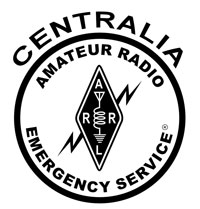What is a “windshield survey” and why do we do them? The Centralia Amateur Radio Emergency Services team formed after several disastrous floods visited our area. While emergency communications is our primary purpose, when normal communications are functioning, we are available to help in other ways.
In an Emergency Operations Center (EOC), the Incident Commander is always looking for information about the current situation. He may receive information from police, fire or street department workers but these individuals are also very busy mitigating the disaster and have little time to give assessment information. The Incident Commander may get information through the media but most television stations report on situations in Seattle or Portland and rarely have reporters in beautiful, historic, downtown Centralia. So where else can the Incident Commander turn for information? The answer, in many cases, is the volunteers with the equipment to provide instant radio communications – the Amateur Radio operators.
When not tasked with other duties, ARES team members are assigned specific areas of the city. They may visit business districts or neighborhoods. Driving through these areas, team members take note of water or flood levels, streets closed by deep water, sink holes, broken water mains or people needing help. All that information may be passed immediately to the Incident Commander via the amateur radio station in the EOC.
Floods are dynamic situations which can change minute by minute. The Incident Commander may want to know which streets are passable, are the flood waters still rising, or is power out in one area of the community. ARES volunteers, with no other assignment than to do windshield surveys can quickly and easily provide this information.
A strong earthquake requires even more information as natural gas fires or downed trees and power poles become barricades to emergency service equipment. Citizens need to know their city officials are working to mitigate the disaster and ARES volunteers in their reflective vests and marked vehicles can often provide that assurance.
A clear picture of a disaster is vital to ensuring that police and fire teams can respond quickly to priority situations. Amateur Radio volunteers train regularly to provide this information be it a windstorm, ice storm, volcanic eruption, flood or earthquake. We are ready to respond.

